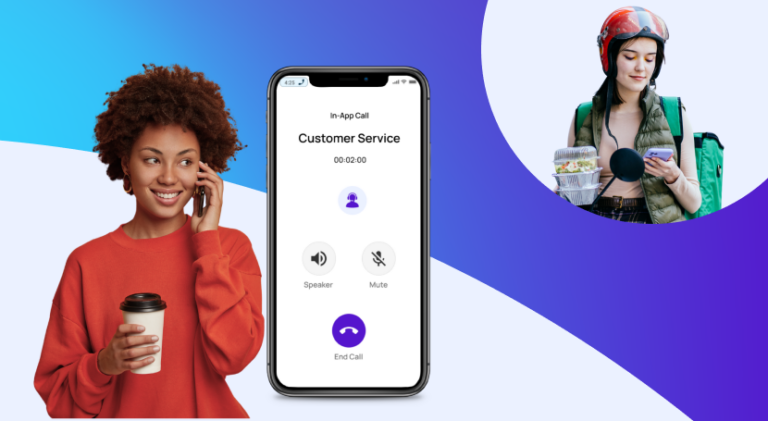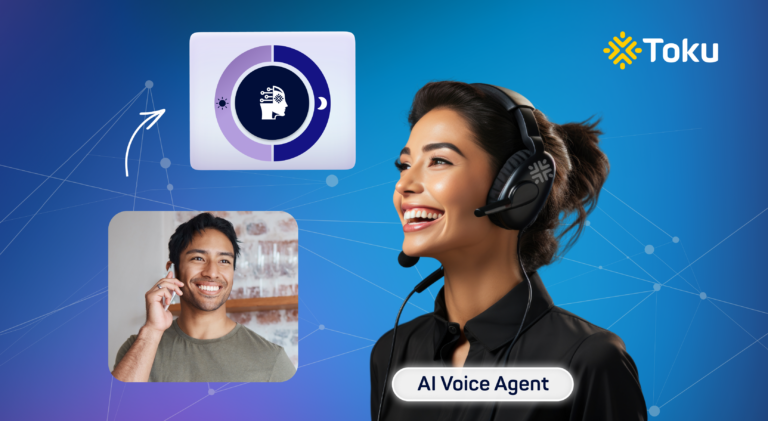Learn more about Communications APIs, how they work, how they can boost customer experience and provide cost savings.
Contact centre team leaders have faced some serious challenges during the Covid-19 pandemic. When the virus hit the news and governments started restricting movements and enforcing strict remote-working mandates, contact centres had to transition to remote working literally overnight.
For those who’d been using on-prem systems for years, the migration to cloud contact centres with CCaaS (Cloud contact centre as a service) systems was a painful but necessary move. Policies and procedures had to be updated on the fly to quickly fit the new remote working environment.
More importantly, keeping contact centre agents’ engagement levels high while they’re working from home and disconnected from fellow team members was a key challenge. As research from McKinsey has found even before the pandemic, contact centres that can keep service agents’ engagement up stand to win big in terms of contact centre performance and overall customer satisfaction.
Now that contact centres have gotten used to operating remotely for almost two years, how can they adapt as the hybrid workforce becomes one of the defining features of the post-pandemic work environment?
Switching to yet another new mode of working could prove challenging for agents.
That’s why we’ve decided to highlight 5 ways contact centres can improve agent productivity in a hybrid work model.
But first, what is hybrid work?
According to Gartner, one type of hybrid work model is where employees can switch locations and schedules dynamically as they see fit in order to drive maximum productivity and engagement.
Being flexible, and adaptable is key to success here.
Equally important is having the right tech and processes that can support service agents as they navigate the seamless, “dynamic flow” between office and home that typifies the hybrid work experience. Cloud solutions play a pivotal role here as they enable agents to access the contact centre platform regardless of where they are working from.
Let’s see how contact centre teams can embrace hybrid work to improve performance.
1. Improve the work environment
The best hybrid workplaces are experts at creating work environments that support employees health and wellbeing while enabling work to get done more productively.
It’s thus critical to ensure agents are comfortable at their workspace – whether at home or in the office. Because your agents spend quite a lot of time here, you’ll need to invest in quality desks, chairs, and lighting. Don’t forget about air quality and noise levels – these can affect an agent’s performance as well. During the pandemic, many organisations offered staff a ‘home office fund’ to help defray the costs of ergonomic desks and chairs, computers, WiFi and phone calls.
A healthy work environment supports a healthy lifestyle. Look into new benefits for your agents such as mental health resources, exercise equipment, gym membership discounts, and even “pawternity” leave.
One concern many contact centres have about moving to a hybrid work model is managing team morale and cohesiveness. Because some agents may opt to work from home and others in the office, it can be hard to maintain the same level of connectedness as a team. It’s thus important to schedule regular team lunches or some sort of activity. This is more about creating a space and time where team members can connect with each other and build the sense of camaraderie that reduces the chances of burnout and keeps morale high.
2. Increase agent availability with cloud contact centre platforms
When agents are tied down to an office for work, it places unnecessary restrictions and burdens on them from an operations point of view.
This is because long commute times eat into the hours when an agent is available for work. Being geographically restricted also means agents are more likely to be able to work only in a particular time zone.
With the power of cloud contact centres as a service (CCaaS) platforms, these problems vanish. Agents are able to work a wider variety of shifts – which if you think about it, empowers managers to quickly make up for absences and late shifts, and even scale up and down agents to meet seasonal demands.
In a hybrid work model where dynamically switching from on-prem to off-prem is needed to quickly increase agent availability to meet shifting demands, having a powerful CCaaS in your contact centre’s tech stack is a game changer.
3. Use IVR to empower agents
If you’ve ever fallen asleep from being endlessly transferred from one department to another while troubleshooting your technical problem, you’ve been the victim of an inefficient and unproductive contact centre.
The reality is, there’s already a simple solution contact centres can program to automatically direct specific types of customer queries to appropriate agents who are specialists in resolving those issues.
It’s called an interactive voice response (IVR) system.
But how does IVR boost an agent’s productivity? Simple. By directing a specific kind of query to an agent specialised in that issue, you are empowering the agent’s ability to focus their energies on resolving that issue for multiple customers. This is because they spend less energy switching contexts and finding the right protocols and data to deal with different problems.
Contrast this with a scenario where the agent has to switch contexts and find the right information for every single ticket. Because they have a totally different set of tools and data at their fingertips from the previous problem, it’s like they need to reconfigure themselves to solve the next problem.
It’s quite wasteful and inefficient.
Having an IVR system can go a long way towards getting the right queries to the right agents faster, which in turn boosts their productivity.
4. Prioritise agent contribution – not physical presence
As lockdowns and work-from-home became the norm at the height of the pandemic, some employees became concerned that they’d be passed over for promotion because they were not physically present in the office.
Moving forward as we transition to hybrid working, it’s more crucial than ever for team leaders to stamp out this concern. If contact centres want to succeed with hybrid work models, then they need to equalise the value of work done at home and on-premise so that everyone feels their contributions are valued – regardless of their location.
For example, contact centres can delineate clear KPIs around agent work outcomes, but be flexible over how, where and when the team delivers those objectives. Doing so gives agents clarity over their goals, which makes them more engaged employees and in turn, better performers.
5. Use advanced CCaaS features to promote transparency
When teams have agents working both from home and in the office, getting a handle on their performance metrics with end-to-end visibility of customer interactions can be a challenge.
This can be easily solved with a few nifty features in modern CCaaS platforms. Try them out to promote transparency in your contact centre, so that you have the necessary data to improve your agents’ performance.
Reporting and analytics
Many CCaaS solutions provide a real-time dashboard to monitor all the key call center metrics in real-time. For example, you can easily view how many calls are ongoing at any given point in time. This enables team leads to quickly decide if more agents need to be provisioned, and scale them up and down accordingly.
There are also agent performance reports that help managers identify training gaps and ensure compliance in all interactions.
Call recording for quality control
Another handy feature is being able to quickly search and access call recordings, allowing you to monitor agent performance.
You can even listen in on a live call without the agent or caller knowing, allowing you greater insight into how agents perform in real time. And for training new agents, managers will appreciate “barging in” functionality that enables them to quickly step in to a call to resolve disputes if necessary.
Call recordings also serve an important transparency function in “backing up” the service agents when a customer has made a complaint. Using the recording, managers are able to ascertain if the complaint is reasonable, or if the client has been abusive – both of which factor into monitoring and improving an agent’s performance.
Survey management
More advanced CCaaS solutions equip contact centres with customer survey management features.
For example, they can automatically request feedback from a client in every interaction. You can use the feedback to monitor your customer satisfaction KPIs and NPS scores.
The future of hybrid contact centres
The hybrid model of working has numerous benefits and more contact centres are set to adopt it in the next few years.
The cloud is central to this endeavour which is why with the right tech like, like CCaaS solutions, and processes that promote flexibility in operations, we see more opportunity than obstacles in the hybrid model.
Ultimately, the hybrid contact centre will enable agents to succeed in their role and drive maximum productivity and engagement regardless of their working location – be it home or the office.
 V K Sanjeed
V K Sanjeed 


 Ana Castrillon
Ana Castrillon 

 Thomas Laboulle
Thomas Laboulle